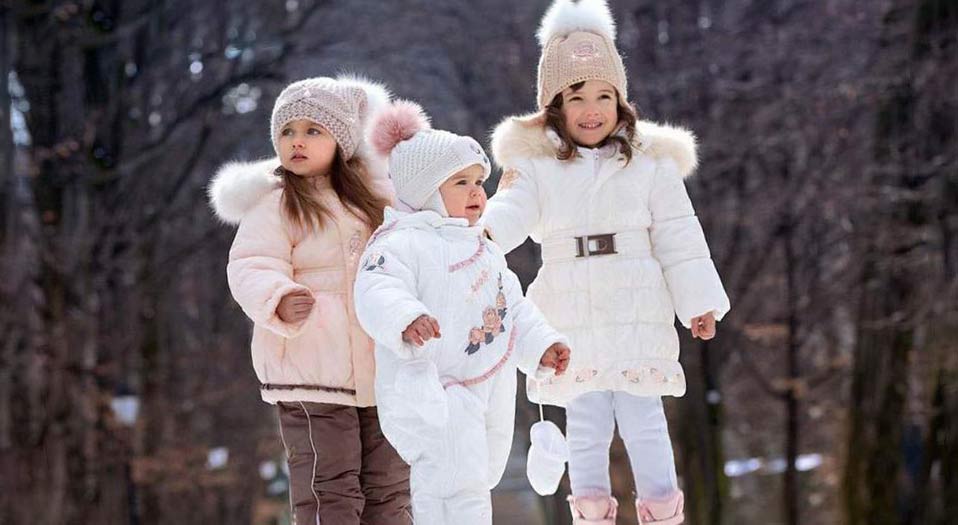
No doubt, any mother or a caregiver tries to keep the baby as comfortable as feasible especially in winter. In addition to the universal thumb rule of a ‘visible and kissable’ face of the baby, the mother always tries to keep his/her in an upright position. There is no second opinion that an obstruction-free face with a fabric of the sling is always ideal.
Of course, the heat generated by being close to your body may not be sufficient all the times. Though the baby clothing may not change considerably during winter, the additional precautions in bundling up against the cold could keep him/her more comfortable. Early years centre professionals know exactly how to keep your little one warm and share their expertise below.
Tips on Keeping Your Baby Warm
You don’t want to spend the Canadian winter cooped up indoors, terrified to take your newborn child outside, because after all, this is Canada. The arrival of snow is always exciting for children, and everyone requires plenty of sunshine and fresh air. You and your child may spend the entire winter enjoying the great outdoors if you adhere to certain fundamental guidelines from early on centers, such as dressing in layers, using appropriate textiles, and maintaining a dry environment.
Appropriate Materials
When shopping for baby apparel, pay particular attention to the materials of the items. When it comes to extreme cold, Lycra and silk are superior insulators to cotton when worn adjacent to the skin. Long-sleeved t-shirts made of cotton will not provide as much warmth as shirts made of flannel, wool, or fleece when worn as an intermediate layer. Overalls, corduroy pants, and lined pants are all warmer options for pants than cotton pants or blue jeans. It is important that outer layers be water resistant or water repellent. The most effective defense against temperatures below zero will be a blanket constructed of fleece and wool.
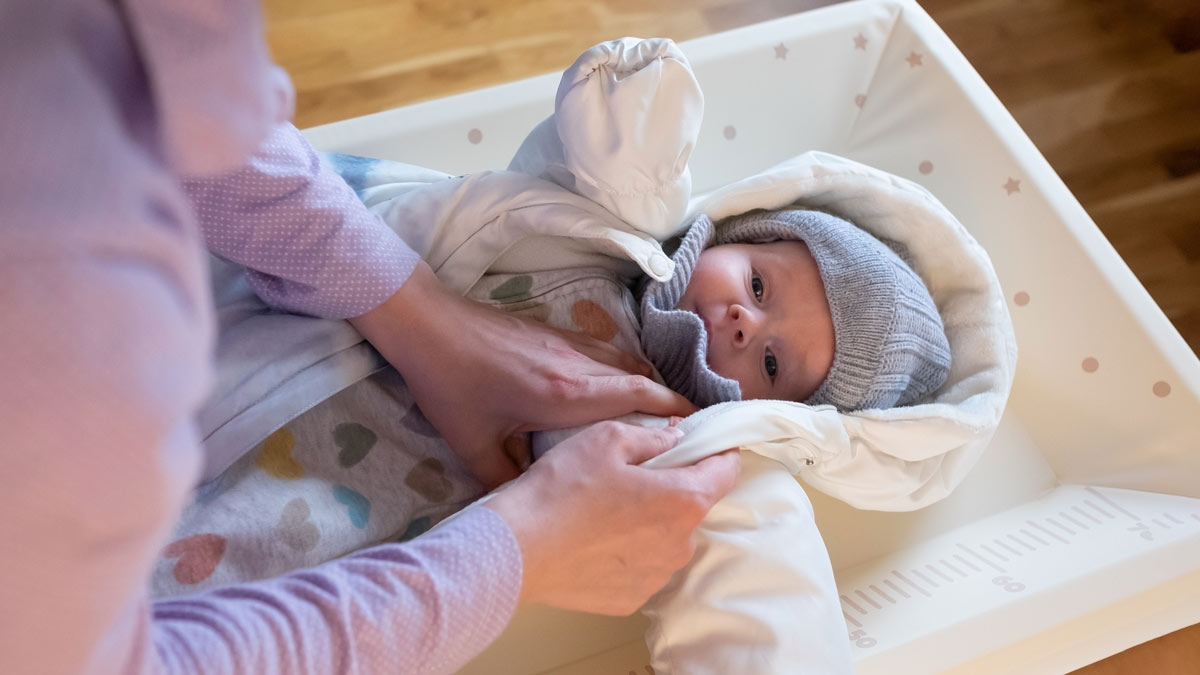
Putting on Layers
According to early years centre professionals, regardless of whether you plan to spend the day inside, outside, in the stroller, or in the car, you should have a number of layers of clothing and blankets that can be quickly put on or removed in order to maintain an appropriate temperature for your child.
Bring Extras
Make sure you have some dry replacements ready. You will need to bring extra winter clothing with you so that wet mittens, stockings, and caps may be swapped out for dry alternatives if necessary.
The fact that we move from one location to the next, each of which has its own temperature, is one of the more difficult aspects of dressing for the winter, particularly in a country like Canada, where we experience all four seasons. The following are some general recommendations for baby gear from early years centre specialists, based on where you are most likely to go throughout the winter with your child.
Staying Toasty Inside
A helpful piece of advice is to put on one extra layer of clothing than you are wearing yourself when dressing your infant. Among other early years centre tips are:
- If the temperature in your home is typically moderate, additional layers, such as cotton onesies or t-shirts, can be beneficial for your child.
- When playing inside, an additional layer can be provided by donning a snug sweater or sweatshirt that is of a lighter weight.
- Cotton socks are not going to keep your baby’s toes as warm as wool or wool blend socks, even if they are thin. The similar effect may be achieved with a pair of slippers even if you do use cotton socks.
Night and Daytime Sleep
The first thing early years centre specialists recommend that parents be careful with is that infants should never be put to sleep with blankets that are either too loose or too thick. This is due to the fact that babies can suffocate or be exposed to a sudden infant death syndrome.
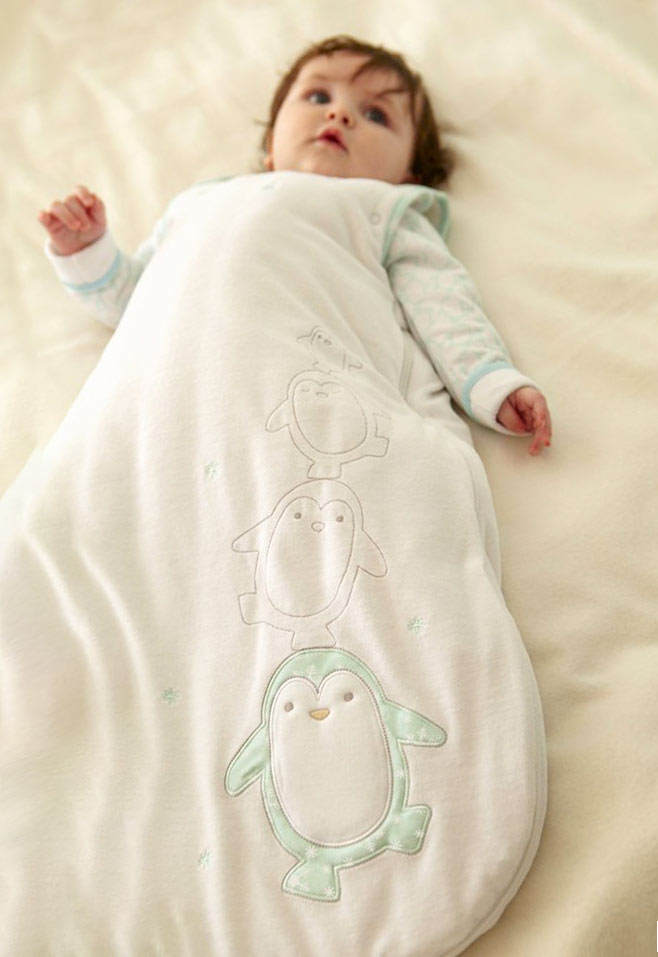
Sleeping bags or sleep sacks are safer than unsecured blankets. You won’t have to worry about your baby being cold in the middle of the night or about their blankets sliding off because all you have to do is zip your infant into a sleeping bag over their pajamas. There are a variety of various types of materials used to make bags, including cotton and fleece. Some sleeping bags come with sleeves, while others do not have any sleeves at all. The length of the sleeping bag should be sufficient for the child to be able to stretch their legs out straight and fit nicely around their arms and neck. This is the single most crucial factor to take into consideration.
Sleepers: These pajamas are not only super adorable, but they are also very practical for the colder months. Your infant’s toes and hands will stay toasty warm thanks to these. They might be warm enough for a night spent outside in a mild winter when combined with a cotton onesie and a lightweight blanket. When combined with a sleeping bag, these pajamas will keep your infant warm and cozy even on the chilliest of winter evenings.
Hats made of cotton: Little caps made of cotton are an excellent choice for keeping your baby warm when they are resting and while traveling in the car.
Blankets: Overnight, an infant may require an additional layer of warmth, which can be provided by tucking a lightweight muslin or cotton blanket under the arms of the infant.
Use a room thermometer if you are unsure about the temperature in the room where your child sleeps.
Day Walk
It can be challenging, not to mention time consuming, to dress appropriately for the chilly winter days. These are the most important components:
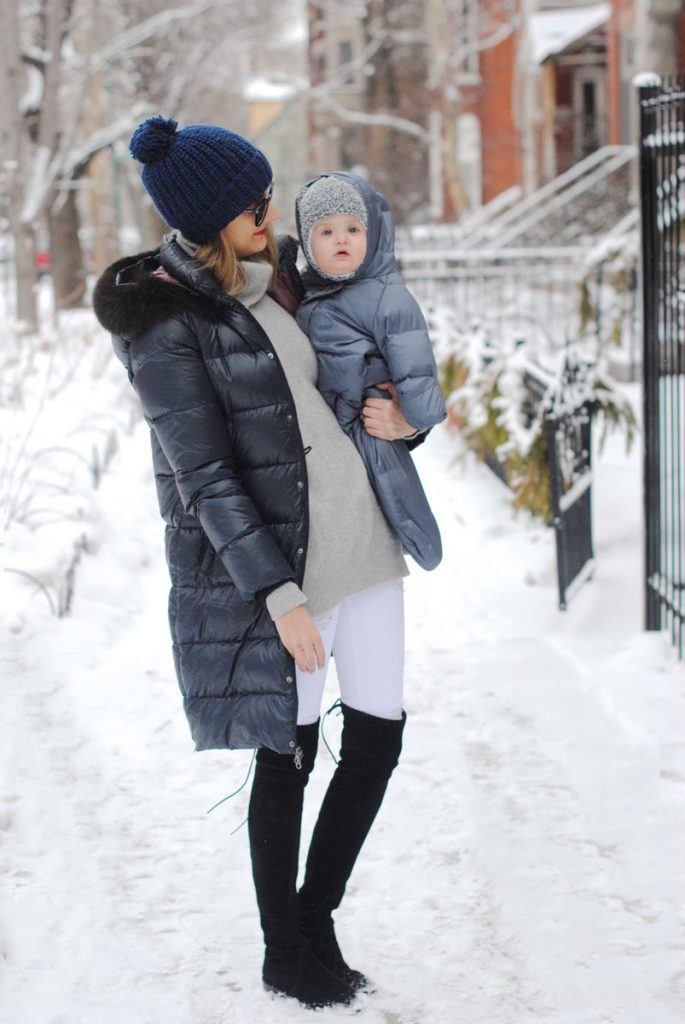
Bunting Bags and Snowsuits
Find snowsuits or bunting bags that are very simple to don and doff whenever you need to. There are some that only have one zipper, which can make things a lot simpler for you. Snowsuits include legs and arms that are contoured to the wearer, and the majority of them come with hoods. In contrast, buntings are more like miniature sleeping bags, and they may have a seam between the legs in order to facilitate easier stroller snap-ins. Look for clothing and equipment that has a thick layer of insulation and an external fabric that repels water.
Long Underwear
If you intend to spend a significant amount of time outside, you should probably get your baby some long underwear so that they can stay warm. Your child will stay drier and warmer if they are wearing an absorbent synthetic fabric when they are outside.
Socks
An insulating single layer of socks made of wool, wool blended with silk, or polypropylene will provide adequate protection against wet snow when worn. Do not choose extra-thick socks since they can cause your baby to have cold feet because they hinder blood flow and air circulation around the toes. Instead, opt for thinner socks.
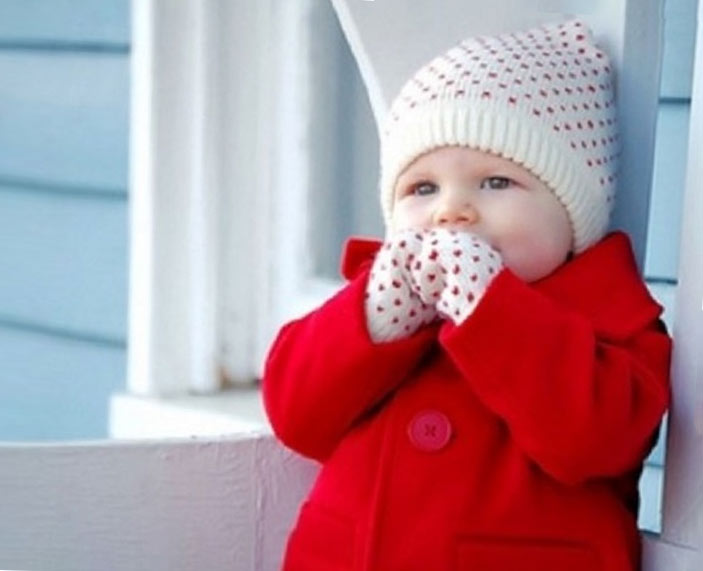
Hats
Hats you choose for your infant should be warm, snug fitting, and should cover their ears. The experts at the Sick Kids hospital in Toronto advise parents not to protect their children from the cold by using stylish hats or baseball caps. Further, a hat with an extra fleece lined inside the hat would make him/her comfortable with the vagaries of cold weather.
Warm Up with Mittens
You can ensure more warmth to the baby if you are opting for mittens and socks. It is also a good idea to tuck or pin a blanket around the side of a carrier so that the cold breeze does not affect the baby. Of course, do not forget to check the cheeks of a baby occasionally whether he/she is sweating. It is necessary to ensure that they are not feeling too cold or too hot.
Neck Warmer
Because of the risk of suffocation, the specialists at BabyBuddha advise opting for a tube-shaped neck warmer rather than a scarf while warming the neck.
Boots
If the snowsuit or bunting bag you have for your baby does not protect their feet, you should put them in warm boots that are waterproof and have enough room for their toes to move about.
The Amauti
The Inuit way of carrying a baby in a park has proved to be ideal for generations. The baby would be comfortable against the back of a mother in the pouch. Since he/she is not visible to you, it is a better idea to use a` swaddle so that the baby is upright and you are sure of his/her safety. The variety of amauti could be of caribou, sealskin or a modern-day thin, light and warm synthetic material.
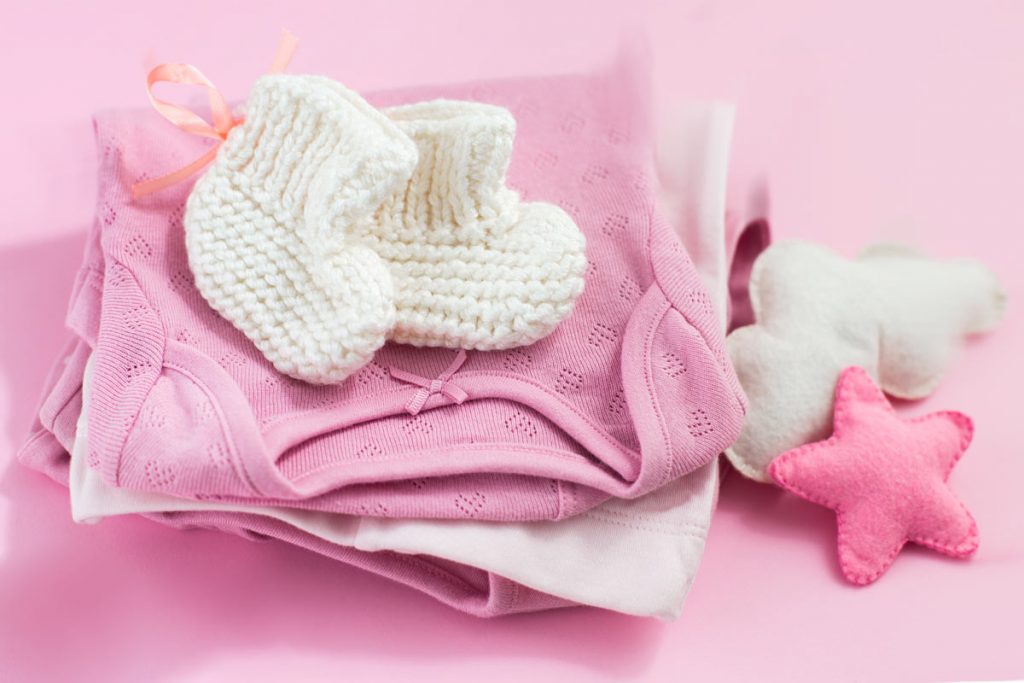
Baby Leggings
You can also opt for putting the baby leggings underneath the pant for cuteness and extra warmth. You can easily pull them off in case the baby is not comfortable if it is hot. When you wrap up the baby, the little legs of his/her are not exposed to the outside cold.
In addition to the above, you can also try to wrap the baby with extra layers of cloth so that warmth is generated for his/her to be comfortable.
With all the care for a baby in the carrier, probably it is time to cope with the icy sidewalks. Though you are carrying his/her in an adjustable carrier, it might be challenging to balance yourself along with the additional weight of a baby under you put on the snow boots.
Before you purchase a brand-new snowsuit or bunting bag, it is recommended that you check out second-hand stores, Facebook Marketplace, and ask around in your various parent groups and children care platforms first. Snowsuits are typically only worn by children for one winter season due to the rapid rate at which children outgrow them. This indicates that you should be able to discover a snowsuit that has seen very little use and is still in excellent condition for a fraction of the original cost, if not for free.
Outfits Suitable for Having Fun in the Snow
It might be a nuisance to get a kid of any age ready to play in the snow, but that shouldn’t stop you from letting your little explorer take part in one of the most enjoyable aspects of winter. Early years centre professionals predict that at the age of six months, well before your baby is able to walk, they would be fascinated by the different feel of snow. The importance of keeping warm and dry while playing in the snow should not be underestimated while selecting winter attire for a newborn baby.
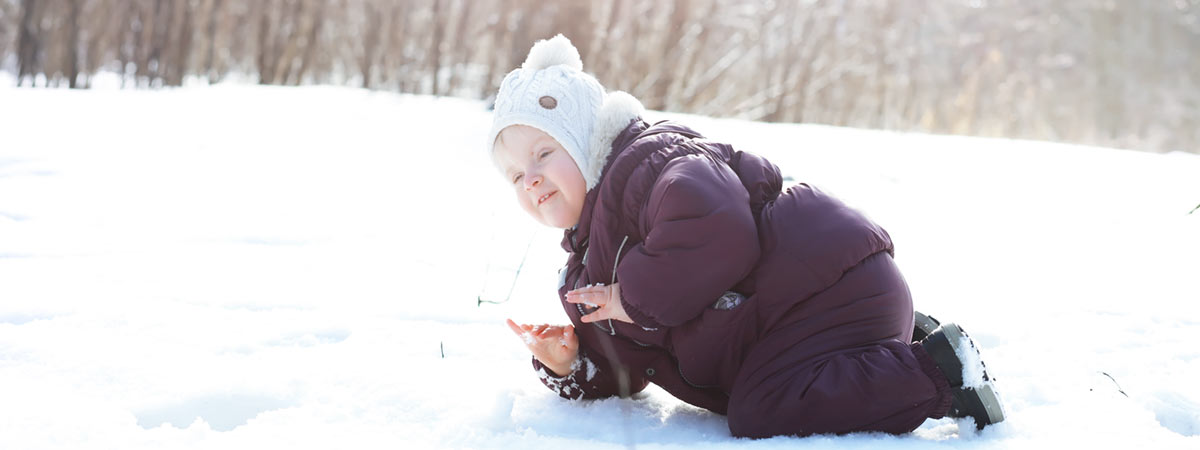
According to early years centre experts, your baby absolutely must wear either a waterproof snowsuit that has attached feet or a snow jacket along with waterproof pants and boots. Remember to include a hat and waterproof mittens for your baby, but don’t worry if they want to feel the snow with their bare hands because you can just take them off for a moment. After you’ve finished, you’ll need to be prepared to swiftly dry and warm up the items, of course. In addition, make sure to apply sunscreen and wear sunglasses because the snow will reflect the sun’s rays.
There is no predetermined cap on the length of time your baby can spend playing; thus, you should use your best judgment and bring them inside at the first sign that they are uncomfortable.
Driving with a Baby in Winter
It is strongly recommended by early years centre specialists that you do not place your child in their car seat when you are wearing bulky winter coats and snow trousers. The following are some fantastic solutions for keeping your kid warm while also ensuring their safety while traveling in a vehicle.
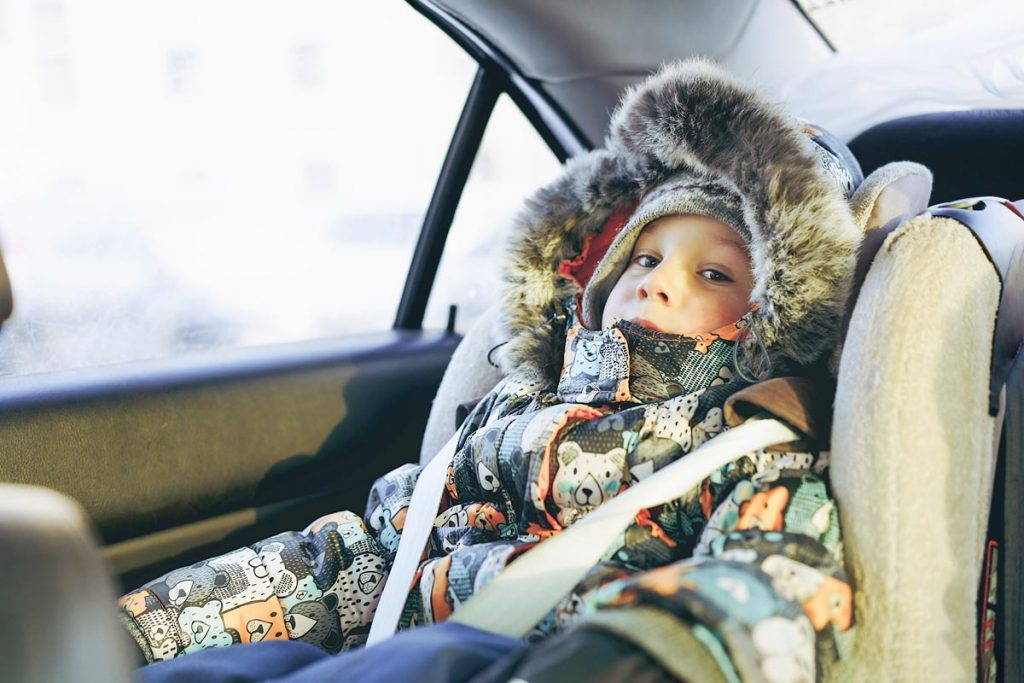
- Layers. Dress the baby in warm, light layers that fit snugly, such as a thick cap, a onesie, a thin hoodie, a snug fleece jacket, and fleece-lined pants.
- An additional blanket. Put a blanket in the car seat and tuck it over the straps that are already tightened. If your infant seems to be getting too hot, you should take off the hat and/or the blanket.
- A cover for a vehicle seat. These are covers that have elastic borders and are shaped like shower caps made of wool and fleece. They stretch all the way around the exterior of your car seat and have a hole in the middle where your child’s head can fit through.
- A helpful piece of advice for parents from Ontario Early Years Centre is to steer clear of using any after-market coverings that go behind your kid or sleeping bags in the car seat. Doing so may cause the straps to become loose, which would be dangerous in the event of an accident.
